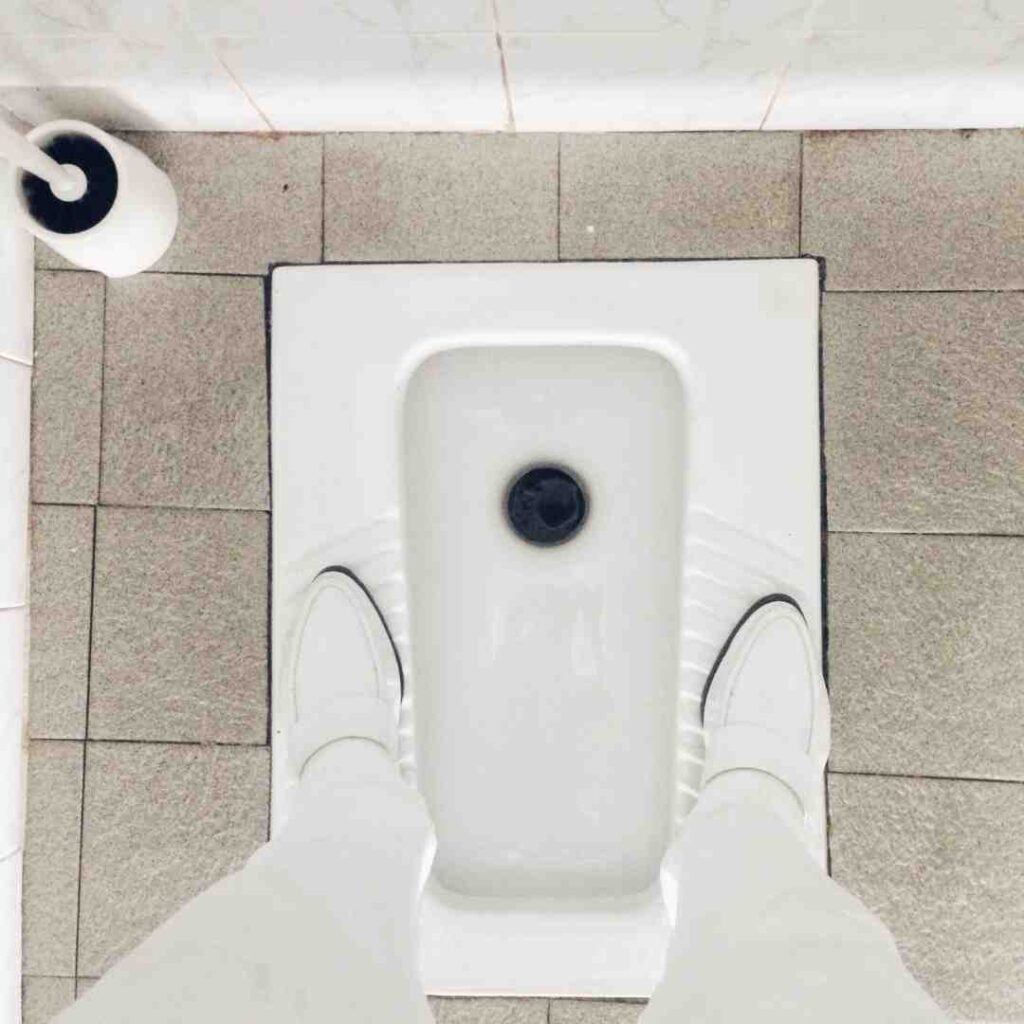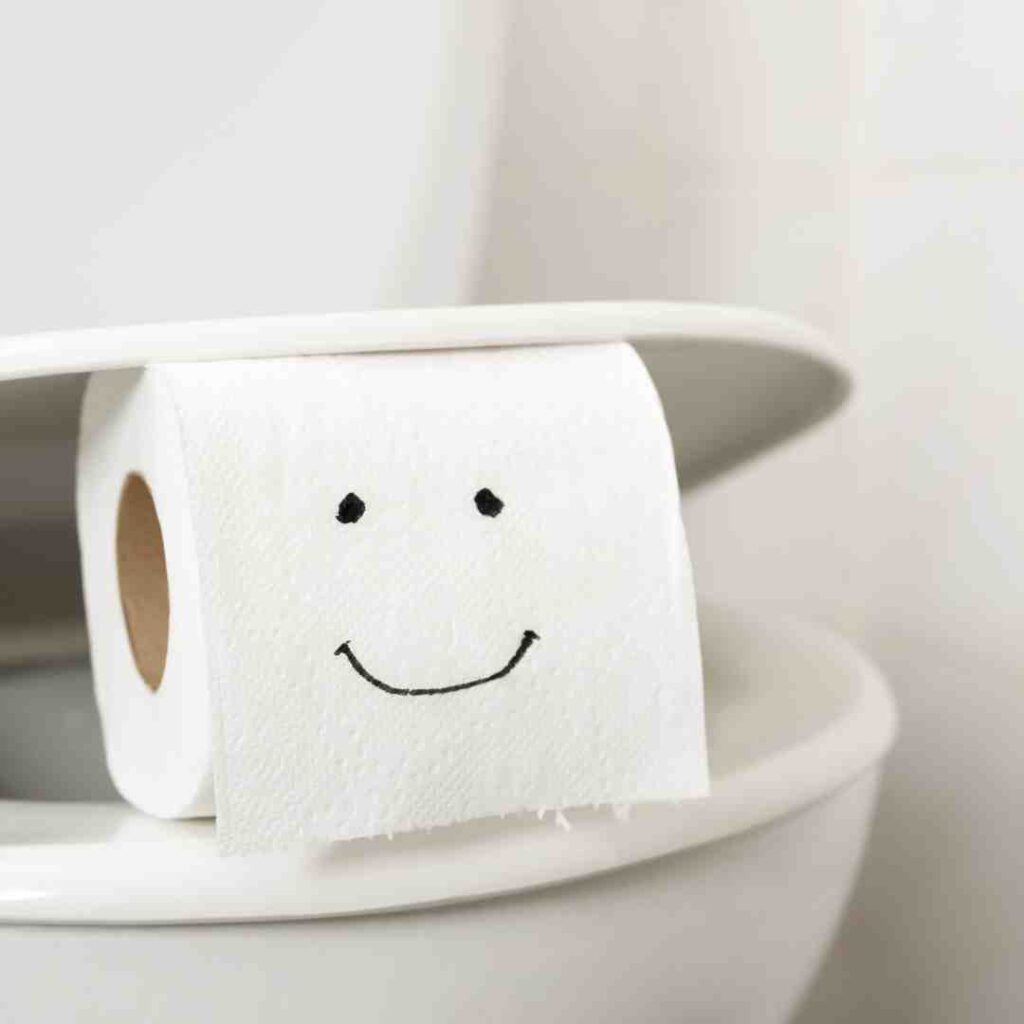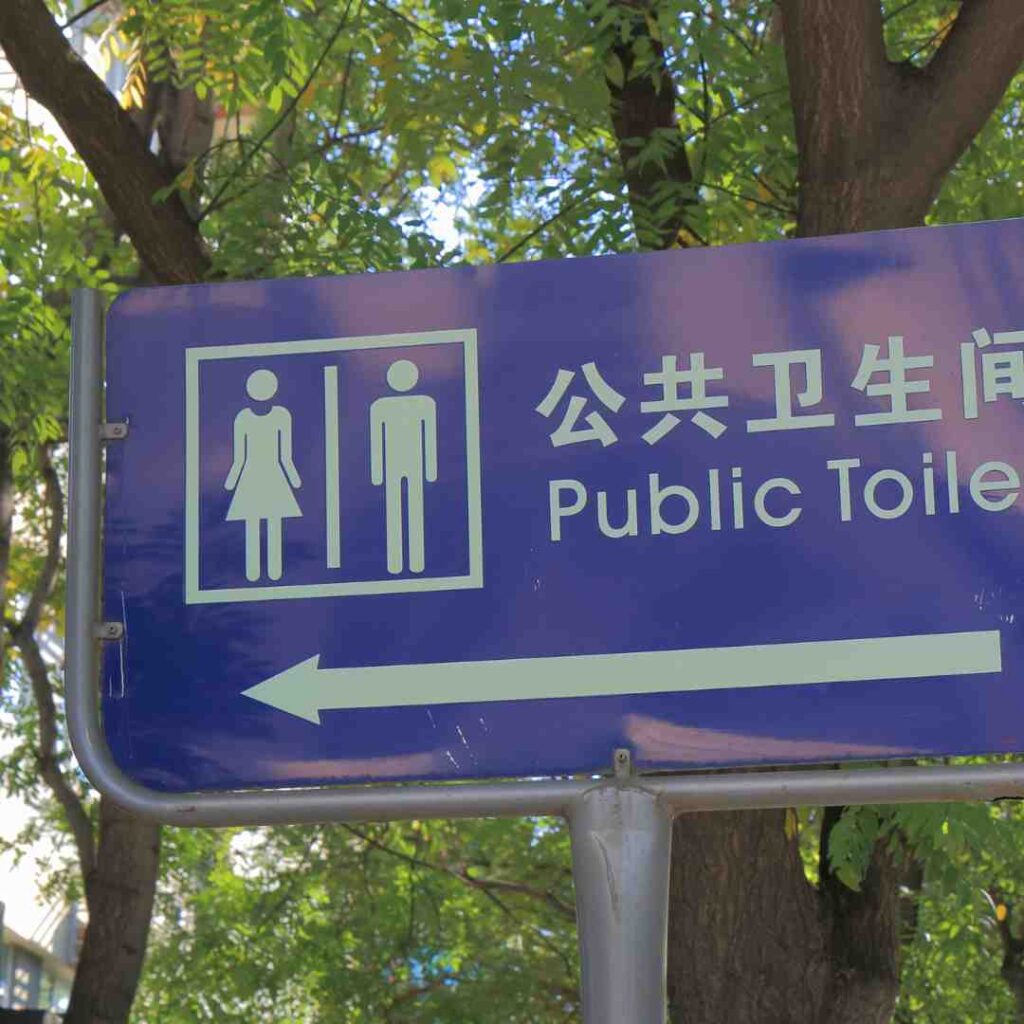Step into the hidden world of China’s unique toilet culture, where eastern tradition and western influence meet.
As a traveler in China, the toileting experience can be equally captivating and mystifying. Imagine being far away from home and encountering two types of toilets in China: the familiar western-style and the surprisingly prevalent squat toilets, which locals claim to be more hygienic.

As I journeyed through China, I discovered that the variety extends beyond just the type of toilets. You’ll find public restrooms of differing quality and amenities, with older establishments often lacking essentials like toilet paper and soap.
But fear not, as I also saw the fruits of China’s ambitious ‘Toilet Revolution’ initiative aimed at improving sanitation across the country, constructing over 68,000 public toilets in two years!
Join me, as I unveil my first-hand experience of the yin and yang of China’s toilet landscape.
Two types of toilets in China: western-style and squat toilets
The latter squat toilets are more common and considered more hygienic by locals.
When it comes to the toiletry experience in China, it’s pretty fascinating because you’ll come across two primary types of toilets during your visit. Let me paint a picture for you.
On one end, we have western-style toilets, a sight for the sore eyes of a typical traveler who has wandered far from home. Their design is pretty straightforward and what you’ve probably grown accustomed to back at your comfort zone – a place to sit, do your thing, and contemplate the meaning of life, perhaps?
But what may come as new to some travelers are the squat toilets in China, which, surprisingly, are more common throughout the country, even in most public spaces.
The name says it all: you squat, not sit (and no toilet seat cover!).

It might seem a bit tricky for the uninitiated, but believe me, you’ll get the hang of it after a couple of tries.
Squat toilets are favored for their ubiquity and hygienic reasons, widely touted by locals. The squat toilet is a common sight in China. Chinese culture and traditions influence the design and etiquette of restrooms.
Chinese toilets often reflect the local culture and sanitation standards. Using a public toilet in China might be a different experience for many foreigners. It’s more of a touch-free experience, if you know what I mean.
So there you have it, the yin and yang of the toileting culture in China: the western-style and the squat toilets. But remember, when in Rome, do as the Romans do. Or in this case, when in China, embrace the squat.
2. Always pack some toilet paper or wet wipes in your bag for such emergencies
With many older establishments lacking amenities such as toilet paper, soap (hand sanitizer), and hand towels.

As someone who has traveled extensively in China, I can tell you that public restrooms there can be a bit of a mixed bag when it comes to facilities and cleanliness.
The variation is quite remarkable, really. Some are spotless with all the amenities you’d expect, while others… well, let’s just say they leave a lot to be desired.
In China, as in many places around the world, the quality of public restrooms tends to reflect the age and nature of the establishment. In many older establishments, they may lack amenities we often take for granted in the West, to provide toilet paper, soap, or hand towels, etc.
Chinese high-quality hotels and restaurants often have clean and well-maintained restrooms. Chinese culture and traditions influence the design and etiquette of restrooms. Big cities in China, such as Beijing and Shanghai, are known for their modern amenities and cleanliness.
I’ve also been in restrooms where I’ve had to bring my own paper or wet wipes, and where hand washing was a challenge because there was no soap or towels available, especially the public restrooms on the roadside.
So, a word of advice – if you find yourself traveling in China, always pack some toilet paper or wet wipes in your bag for such emergencies of the toilets in China. Trust me, you’ll thank me later!
3. The squat toilet, a common sight in China, is considered more hygienic by locals
High-standard restaurants, especially in urban areas, are expected to uphold high standards of restroom cleanliness.
The ongoing toilet revolution has simplified locating toilets across the country. Observing the floor of a restroom can offer insights into its maintenance and hygiene standards.
Doors in public restrooms, particularly in rural or older facilities, might not always be present. Restroom facilities in urban centers generally boast higher quality. The size and amenities of a stall in a restroom can vary based on location.
As a visitor, expect varying restroom standards across different regions.
- Shopping malls often feature modern amenities, including clean restrooms. Exploring toilets in China can be an adventure, particularly in rural areas.
- Many foreigners prefer a western style toilet, commonly found in international hotels and big cities. Local governments are spearheading initiatives to upgrade public sanitation facilities.
- Tourist attractions are enhancing their restroom facilities to cater to international visitors.
- International hotels in China usually offer western toilets among other modern conveniences.
- Pit stops along highways typically provide basic squat toilets. Public toilets in major Chinese cities are generally well-maintained. The Han Dynasty marks the inception of recorded sanitation practices in the nation. The squat variety of most toilets prevails in rural areas and older structures.
Most public restrooms are equipped with facilities for the disabled. Stalls in public restrooms may offer both squat and western style toilets, providing options for users. The choice to squat or sit is available in modern Chinese restrooms.

Keeping the ground of a public restroom clean is crucial for maintaining hygiene. Signs in restrooms offer valuable information about the facilities and etiquette. It’s advisable to check the cleanliness of stalls in a public restroom before use.
A secure door lock is essential for privacy in any restroom. Facilities with top ratings for cleanliness are becoming more prevalent. Public restrooms in tourist areas often have staff to ensure cleanliness and provide assistance. Most public toilets in China have seen improvements in cleanliness and amenities over time.
4. Discard used toilet paper in the waste basket
As a seasoned traveler, I still remember when I first learned about this intriguing aspect of Chinese washroom etiquette.
Imagine this, you are in China, you’ve just used a public restroom, and you are about to reach for the flush. Wait a second! Don’t toss that toilet paper into the toilet!
The conventional practice in China is to discard used toilet paper in a waste basket provided, rather than flushing it down the toilet.
The reason? It’s all due to plumbing! Chinese plumbing systems, particularly in older buildings, can be relatively delicate. They weren’t designed to handle the bulkiness of toilet paper. Flushing paper often leads to blockages that cause major headaches, and sometimes, severe damage.
5. Toilets in China: rural vs urban
Chinese toilets often reflect the local culture and sanitation standards. Quality and availability of toilets in China, particularly in larger cities and tourist areas, have improved significantly over the years, though they can still be inadequate in remote locations.
Over the years, one of the most striking improvements in China, specifically in its larger cities and tourist spots, has been in the quality and availability of toilets. The squat toilet is a common sight in China,. Anyone who’s ever traveled to these bustling metropolises would likely attest to this noticeable shift. Not too long ago, the sight of a well-kept toilet was far from guaranteed, making the experience for locals and visitors alike a tad challenging. However, things have changed dramatically.
The local authorities have invested heavily in the sanitation sector, a move prompted by both health concerns and the desire to attract more international tourists. These efforts have paid off, resulting in more clean, modern, and accessible toilets, especially in the urban zones and popular tourist destinations.
However, it’s not all rosy across the board. Travel to the more remote corners of China, where tourism and urban development is less advanced, and you might find the toilet facilities somewhat wanting. All in all, the sanitation situation in China is a tale of two cities – quite literally – a shining example in the urban and tourist centers, and a work in progress in the rural and remote locations.
6. The Chinese government launched the “Toilet Revolution” in 2015
Aiming at improving the sanitary conditions of public and rural toilets, the “toilet revolution” in 2015 resulted in the construction of over 68,000 public toilets between 2015 and 2017.
Imagine stepping into a time machine and going back to 2015, to the moment the Chinese government declared a revolution of overall public infrastructure of the developing country. Not your traditional uprising, but a “Toilet Revolution”.
This was a unique initiative aimed at drastically ameliorating the sanitary conditions of public and rural toilets.
I tell you, it was a much-needed change. It was as if a whistle had been blown and the whole nation got to work.
Over the span of two years, from 2015 to 2017, you could see dust and debris flying everywhere as over 68,000 public toilets were being constructed all across the country. Can you picture that vast number? Imagine the impact!
This revolution was more than just about providing clean toilet facilities; it was about maintaining public health, promoting comfort, and enhancing the quality of life.
So next time you think about revolutions, remember the ‘toilet revolution’ that China initiated.
